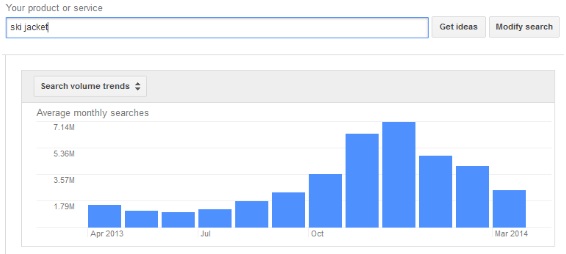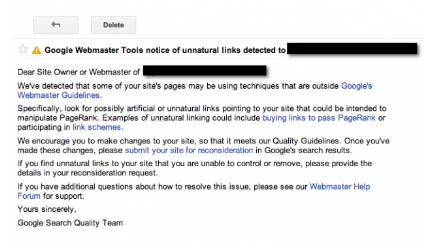New ideas, new implementation and new results – the first year of having an SEO strategy in place can be pretty exciting. Slowly, after so many changes from the site design to the rankings, year one rolls into year two.
Twelve months in, by then SEO should be finally yielding results, right?
Yes and no.
Yes, to some extent, SEO will yield some results – but if you are after something a little more long-term and visible, one year is not enough.
New Year, Same To-Do List
So, for year two of your SEO campaign, the plan should largely be the same as the first year. You might think, ‘Wait. I’m paying to do this again? Isn’t there anything new to try?’
Year two is all about doing everything again.
It’s about completely re-analysing everything, allowing you to fill holes or adjust anything that may be going in the wrong direction. It’s the year when you should continue measuring the performance of every aspect of the campaign, from the conversions to the overall business performance, while still optimising your website for more keywords. Not doing so is where a lot of agencies and businesses falter.
Expect year two to be a repeat of year one – only this time you should also take note of the following metrics, and implement tweaks and major changes.
1. Keywords
The first metric you should analyse during the second year is the position of keywords. If your SEO strategies are working, you should see some of your top keywords gain momentum in the search engine results pages (SERPs).
Unless there have been major changes to the content of your website, there’s no real reason to redo your keyword research in year two. But if you don’t see any progress, find out which pages are ranking for the keywords you want to improve. Without this baseline, you cannot measure progress.
Do this manually by searching for the keyword on Google. You can also use an automatic rank-tracking tool, such as the Google Keyword Planner.

You need to analyse where your keywords can exist outside of the ten blue links as well, such as paid ads or a knowledge graph result.
2. Traffic, Conversions, Bounce Rate
Getting to the top of search engine results for a specific keyword does not necessarily mean you’re getting traffic, leads and conversions. Even after achieving the coveted #1 position, you might still get very little traffic. On the other hand, you might get lots of traffic – but few leads and few conversions.
Source: 3-Step Conversion Funnel
To build an effective online sales funnel for year two and convert more of the tire-kickers into satisfied customers with massive lifetime value, first know where the traffic is coming from. How are users finding you? Are your Facebook or Twitter pages driving traffic? What search engines are they using? Then decide where to focus your year two budget to get the most visitors.
Google Analytics is your best tool when it comes to measuring your traffic, conversion and bounce rate. Set conversion goals so you can better analyze traffic sources and identify best performing pages.
The improvement in traffic should also correlate with an increase in conversions and a decrease in bounce rate. This means your campaign should deliver the right kind of traffic from the right audience. The secret here is using the right keywords, especially those that will serve your site well in a post-RankBrain world.
3. Link Building Success
Compare the number of inbound links before the SEO campaign plan started with the number of links after a year’s worth of link building. There should be an increase in percentage. You can use Moz Rank, which mimics how Google views your site and shows the importance of a given web page on the internet.

Doing so will let you know if you are on the right track. And if you didn’t make it happen in the first year, make this a priority for the second year through guest posting, creating infographics, and creating viral content.
4. Algorithm Updates
Has there been an algorithm update during your first year? If so, how did you do?
According to Matt Cutts, Google initiates more than 400,000 manual actions every month. And that’s not all. Google penalises websites that do not conform to algorithm updates, such as Penguin and Panda. The interesting thing here is that only about 20,000 webmasters submit reconsideration requests every month, which means only 5% of penalised sites are trying to recover their rankings.
If you’re the business owner and do not work directly with an SEO agency, chances are, you do not notice any of the major effect of updates on your site. In fact, unless you are knee-deep in the SEO world, you may not have realised there was even an update.
Penguin is now realtime and part of the core algorithm. It took a while to launch it, but totally worth the wait imo https://t.co/ItQM8XxuQ5
— Gary Illyes ᕕ( ᐛ )ᕗ (@methode) September 23, 2016
How then, would you know if you’ve been hit with a Google penalty?
Use tools like Google Analytics, Search Console or SearchMetrics. With only a few clicks, you can stay on top of your data. Google Search Console will specifically let you know if your site was penalised by a manual action. If you see this ‘unnatural links’ message, you have a manual penalty.

For algorithm penalties, you may need to compare the date when a new algorithm update occurred and the time when you lost traffic.
Year Two Mantra: Analyse, Repeat, Adapt
The bottom-line is, year two requires analysing, repeating, and adapting on year one. You need to redo every strategy again and again, making sure no errors have slipped through the cracks, and that nothing else needs to be tweaked in your SEO campaign plan for better performance.
If you can do more of that (and more than that) in a year and beyond, you can build your organic presence slowly and steadily over time – and real SEO success will come naturally.